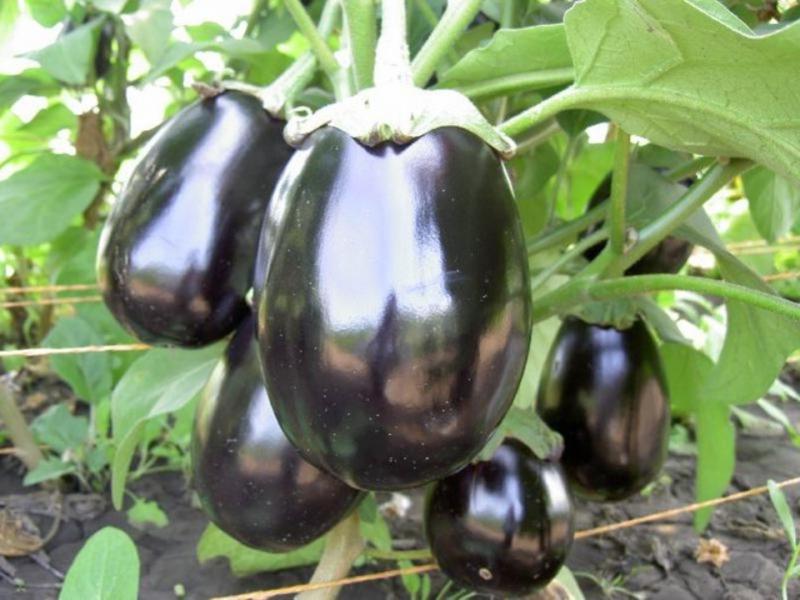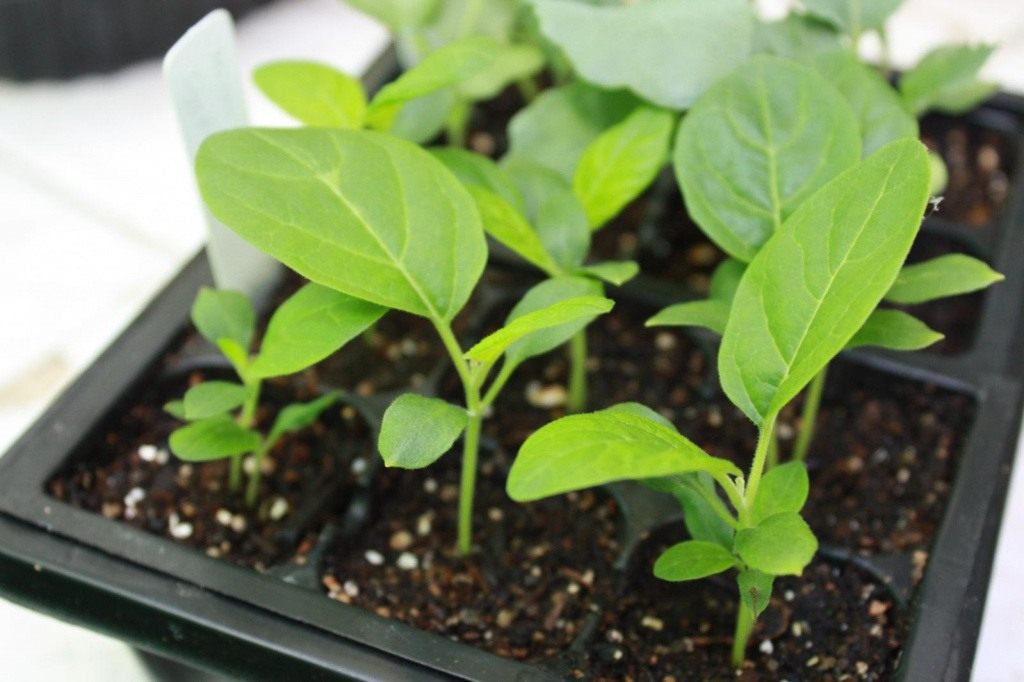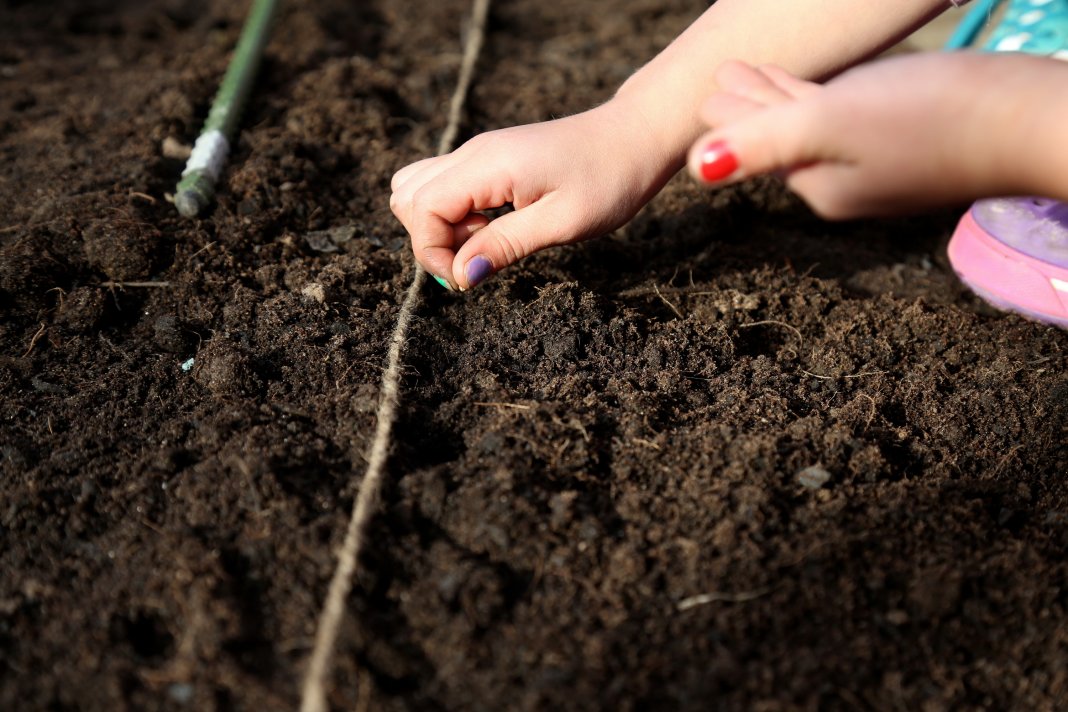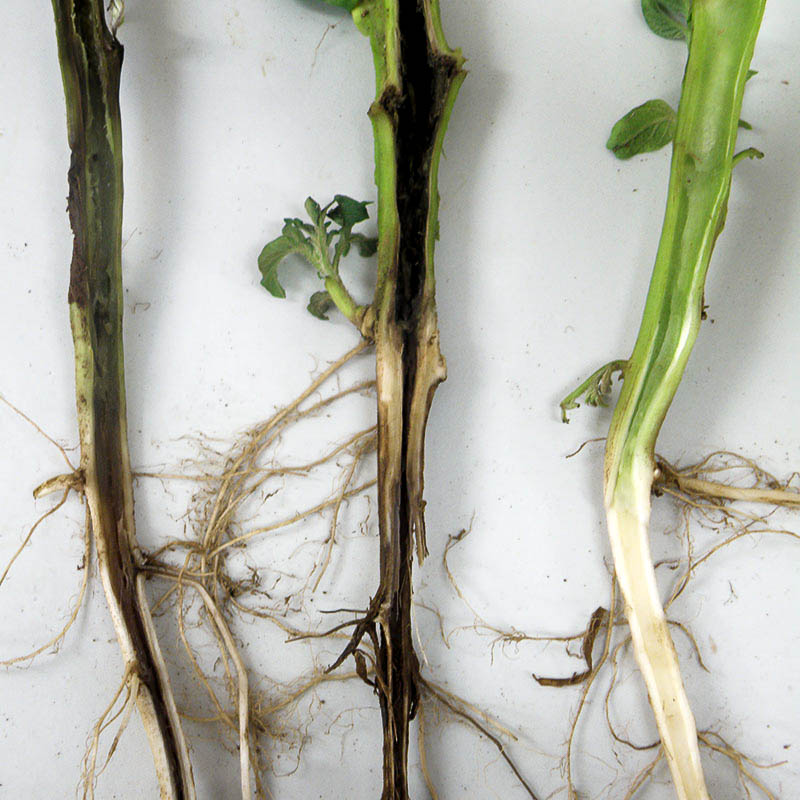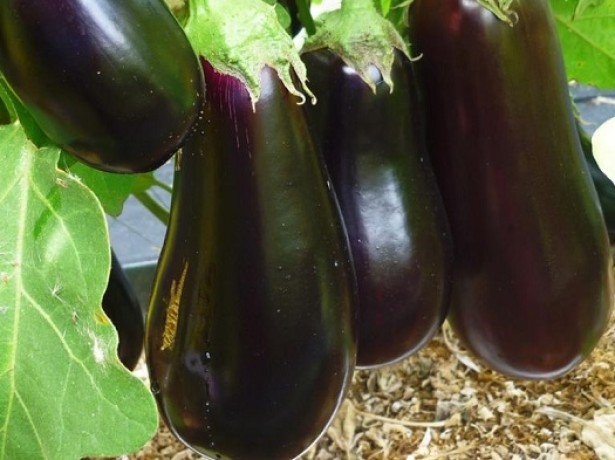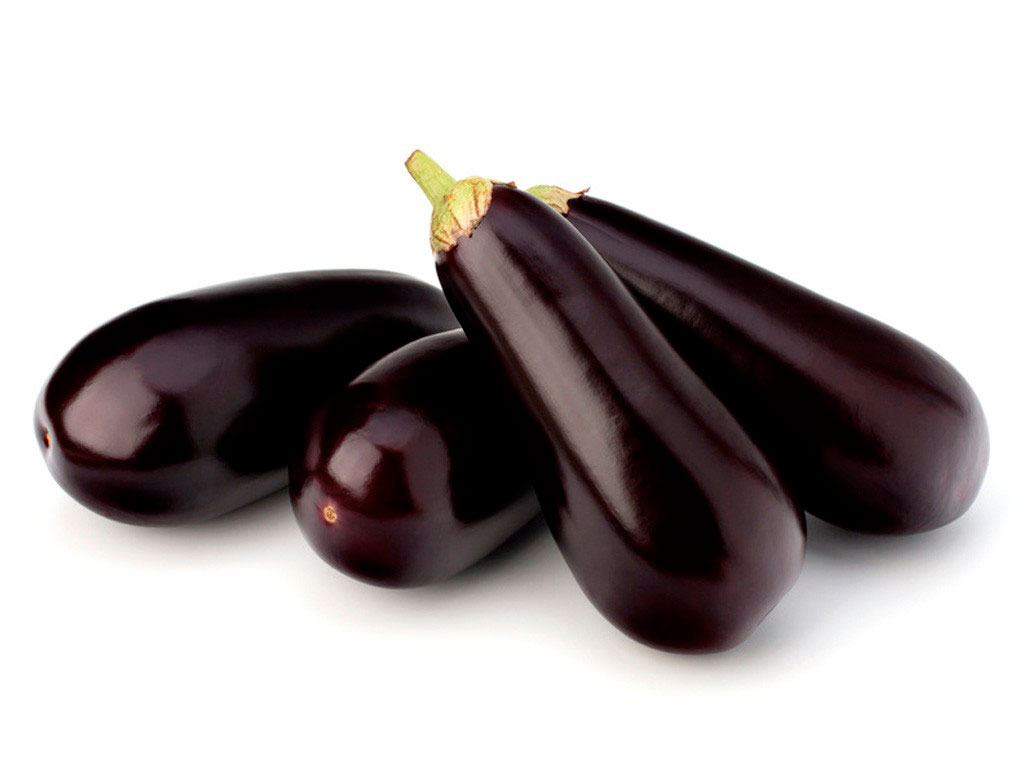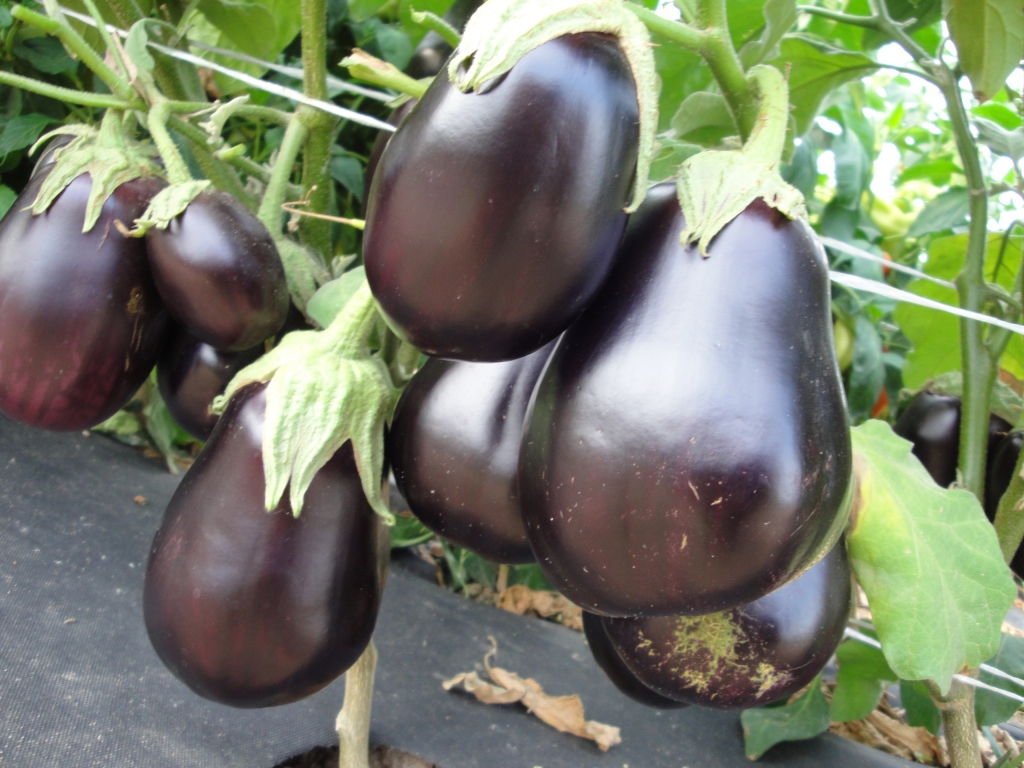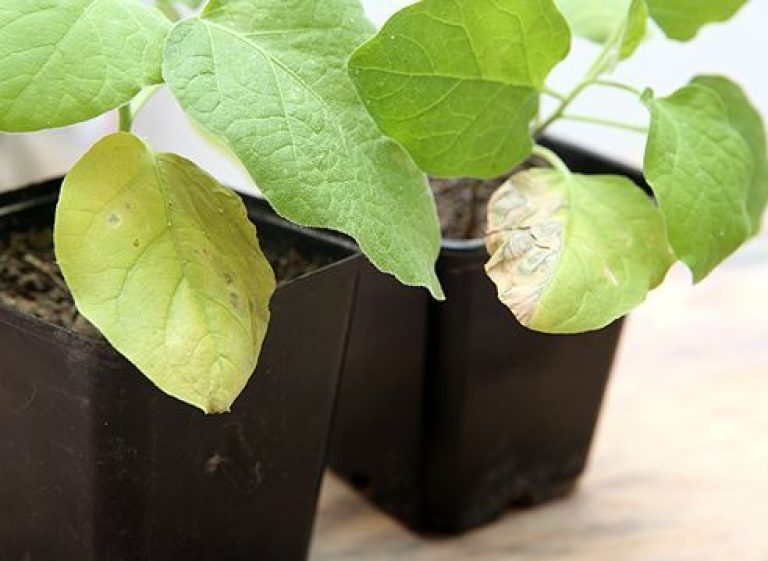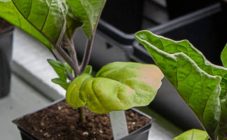Content:
The Vera eggplant variety was bred in 1998 by breeders from Siberia. It appeared in the State Register of the Russian Federation 3 years later. Due to the fact that the yield of the variety is not the highest, it is mainly recommended to grow it for small farms. Regions that are suitable for him: Far East, West Siberian, Ural.
Eggplant Vera: characteristics and description of the variety
The Vera variety ripens early, and therefore the fruits appear about 100-118 days from the moment the first shoots appear. It is resistant to cold weather and has excellent fruit quality. Expected yield: 1–1.2 kg per 1 m² (maximum possible - up to 3 kg per 1 m²).
The plant does not grow much, retains a compact appearance with a height rarely exceeding 75-105 cm. The leaves are violet-green, small, have notches.
Regarding the fruit, we can say that the calyx has thorns, but they are rare, and the eggplant itself is pear-shaped, reaches up to 20 cm in length, the maximum weight is up to 300 g. The pulp is greenish-white and has no emptiness. Outside, the eggplant is covered with an even skin, rich purple.
Planting and growing
Depending on which strip the crop will be grown in, a decision is made to plant it in open ground or in a greenhouse. If this is a region with a long summer, from mid-April to the first days of May, you can already sow eggplant seeds directly into the open ground. For residents of cold areas, it is better to pre-prepare seedlings, the sowing period for which is from February to early March.
In order for the germination to be high, you need to take care of the planting material in advance. Thus, soaking the seeds for about 30 minutes is paramount. The seeds that float are considered to be of poor quality and are not taken, but those that floated are dried and continue to be prepared. Heat treatment is the next preparatory stage. The seeds need to be heated for a couple of days at a temperature of + 50–55 ° С. You can also place seeds on a heating battery, if there is one in the house.
A few days before sowing, the planting material is disinfected, which reduces the risk of developing fungal diseases. Often a solution of potassium permanganate is used for these purposes. In addition, additional treatment with a growth stimulator before planting will help the plant to grow stronger faster and increase fruiting.
Features of growing seedlings
When preparing seedlings, each seed should be placed in a separate container, so as not to resort to picking in the future, which eggplants do not tolerate. The best soil will be a mixture of peat, humus and sand (proportions 1: 1: 1). After planting the seeds, the containers are covered with foil, and after about 2-3 weeks the first shoots appear. Suitable temperature for germination: + 24–26 ° C. From the moment of germination, the temperature should be reduced to 16 ° C during the day, and 13-14 ° C at night, but not for long, only for 5 days.After this period, the temperature regime is brought closer to that characteristic of open ground (in the daytime 25-28 ° C, and at night - 15-17 ° C).
After the appearance of 2 true leaves, the moment of the first feeding comes. For this, a solution of fertilizers based on phosphorus, potassium and nitrogen is used. The second feeding should take place no earlier than 14 days later.
Before the moment of transplanting into open soil comes, the eggplants need to be hardened, and for this they are taken out for a while in the air (for the first time, 1.5 hours is enough). With subsequent times, the time interval is done more.
Outdoor transplant
After germination of 5–6 true leaves, the seedlings can be replanted. Most often, the period of this stage falls on the second half of May - early June, it is then that the earth warms up to the desired temperature. It is important that it is not with high acidity, and the enrichment with organic fertilizers does not interfere.
The plant itself is placed in a hole, into which a little warm water was previously poured, its depth should be approximately 10-15 cm. The distance between the bushes should be kept in the interval of 30-35 cm. seedlings.
Vera eggplant care rules
The varietal features of eggplant are such that it is not whimsical to care for, however, it requires regular fertilization, weeding and watering. Watering should be moderate, allowing the soil to remain moist, but not to a "swamp" condition. After it, you should get rid of all weeds and loosen the soil so that it is saturated with oxygen.
As noted earlier, this type of eggplant requires fertilization.
With a lack of minerals, even the appearance of the bush and fruits changes. For example, with a nitrogen deficiency, a change in color to pale green is noted, then leaves fall off, and the fruits themselves barely reach medium size. However, excessive use of fertilizers will also not lead to good - the bush grows, but gives a modest harvest. The most optimal number of feeding times is 3-5 per season.
Diseases and pests
Among all diseases, fungal most often affect eggplants (black leg, late blight). Their appearance and development will help prevent proper agricultural practices and timely soil treatment with fungicides. If a plant is still sick, then it must be eliminated so as not to infect the rest.
Regarding pests, we can say that they rarely attack Vera eggplant. The only one that often bothers gardeners is the Colorado potato beetle. As a rule, such pests are collected by hand. To scare them away, it is enough to plant basil or marigolds nearby.
Advantages and disadvantages
Among the positive aspects of the variety are:
- Early ripeness.
- Good adaptability to both open ground and greenhouses.
- High resistance to cold and temperature extremes.
- Great fruit taste.
If all the recommendations were taken into account when growing, and the care was correct, then in August Vera's eggplant will certainly delight with the harvest. When ripe, the eggplants need to be cut off, because if you leave them in the garden, the skin will lose its gloss, the seeds will become coarse, and other fruits will not have the strength to set the ovary. The Vera variety is excellent for preparing many dishes and for preserving for the winter. In addition, its fruits are low-calorie, contain a sufficient amount of calcium, potassium, sodium, phosphorus, magnesium, vitamins B and C.Therefore, you can not only enjoy the taste of eggplant, but also benefit the entire body.
